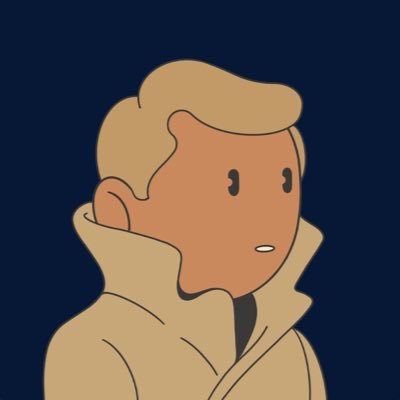About rkw

I go by rkw (ray-kim-won), Korean-Thai, born in 1995, raised in Kyoto, Japan. Based in New York City. “I make things very simple.”
Not because my life is simple but because the truth gets clearer when there’s less in the way. I’m drawn to essence: shapes, silence, stillness. Homes, towers, buildings, boats, chairs, fishing rods. “Things that carry more than they show.”
“I used to think doing art meant doing more, but the most honest style came when I stopped trying to make things more, and just let it be. There’s a kind of wisdom in watching. Not to judge. Not to solve. Just to deliver what’s really there.”
My process is the king. Intentional. I let ideas grow at their own pace. A small line can hold weight. A quiet work can say something loud. I believe something simple can become meaningful, if you give it room to prove itself.
An interview with rkw led by Carlo Borloni


Your biography is a journey across cultures, Korean-Thai roots, a childhood in Kyoto, and now life in New York. How do these different landscapes and identities shape your visual language, especially in such minimal and essential forms?
I moved a lot. It’s a mix that makes you watch and observe quietly. You don’t fully belong, and things feel different in each place. In Kyoto, I think I really felt that quiet. The kind where nothing is shouting, but everything is saying something. A stone, a doorway, just enough. Maybe that’s where I learned to leave space. My work isn’t loud, it’s minus what’s unnecessary. Just there.


You write, “I make things very simple. Not because my life is simple.” There’s a tension there, between simplicity and complexity, surface and depth. What does simplicity mean to you, and how does it operate in Creatures?
Simple isn’t easy like everyone’s thinking. It’s a way to deal with everything bigger than what you see. When things get messy inside, I even make only one shape from that. It’s about making it look clean, calming the noise, small and clear marks that help to find the way back to what it is, essentially.


In Creatures, you reference childhood coloring books and the way children draw without pressure. How do you access that inner child when creating today? Is it instinctual, or do you have rituals or methods to return to that state of mind?
I think a lot over and over, but you know what? I draw fast. Like how kids do. If it’s weird, I let it be weird. If I mess up a little bit, I even leave it. It stays fun. A little wild. A little free. That’s how I try to keep the feeling alive.


There’s a quiet philosophical tone in the way you speak about your practice, “Not to judge. Not to solve. Just to deliver what’s really there.” How do you balance intention and intuition in your work?
I don’t try to make things meaningful with much storytelling, but they end up that way because they suddenly turn into anyone’s memorable pieces. I understand the way I make it through a little moment inside the brain—like the hand knows something from the brain. I let it lead. My job is just to make it that way, and not interrupt it much.


Each creature in the collection holds personal meaning, a salmon that felt out of place, a calm cat, even bacteria. Could you tell us more about one or two of these figures, and what they represent to you?
The salmon is me, probably. A bit confused, swimming against the current for no clear reason. The cat is who I want to be, slow, chill, nothing to prove. And the bacteria, that one’s funny. It reminds me that even invisible things can live loud lives.


Many artists strive to say more by doing more. But your approach is about restraint, giving room to a “small line” or “quiet work.” What role does time and patience play in your creative process?
Patience is my technique, but it’s really intense behind the scenes. One day I draw a line, and it’s right. I don’t know how, it just happens. When it comes, it comes really fast. But before that—that’s where the work really starts. It’s like waiting for an animal to come out of the woods. You sit still. You don’t chase it. And when it comes, you just watch, gently. It takes time to feel ready enough to make something.


Your aesthetic seems to reject spectacle in favor of sincerity. In a time when much of digital art leans toward maximalism, do you see your work as a kind of resistance?
I’m not trying to be the opposite of big digital art, I just make what feels right to me. Quiet things have power too. Maybe it’s not about resisting—more like refusing to shout when a whisper works better to me.


The creatures feel like fragments of memory, emotionally resonant, but abstracted. Is nostalgia a source of inspiration for you? Or is Creatures less about looking back and more about preserving something that’s still alive?
I’m looking back with care, I’m holding on with love. There’s a part of us that never grows up. Creatures is a way to protect that part. That kid part of me—I just don’t want to lose it. Hope you feel the same.


You often return to the idea that “things carry more than they show.” In your view, what makes a simple drawing, like a flat-eyed frog or a chair, capable of evoking something universal?
The drawing is simple, but the feeling isn’t. A frog with flat eyes might carry someone’s whole memory. A chair might remind someone of resting at home. I like when things don’t explain themselves that much, but still feel instantly.


What do you hope people feel when they encounter Creatures? Is it joy, recognition, melancholy, or simply a kind of pause in the noise of everyday life?
I just hope they feel something more from the less. Could be joy, could be a weird pause like “wait, a minute.” Doesn’t matter. If it gives someone even a second of softness in their day, that’s enough for me. The world’s already loud—I’d rather be a quiet corner for us.

Sign up for our newsletter to keep up with the latest news from NINFA
Sign up for our newsletter to keep up with the latest news from NINFA
Write us at: info@ninfa.io, or click here if you need support
Copyright © 2026 Ninfa Labs - 12094240962 - All rights reserved

